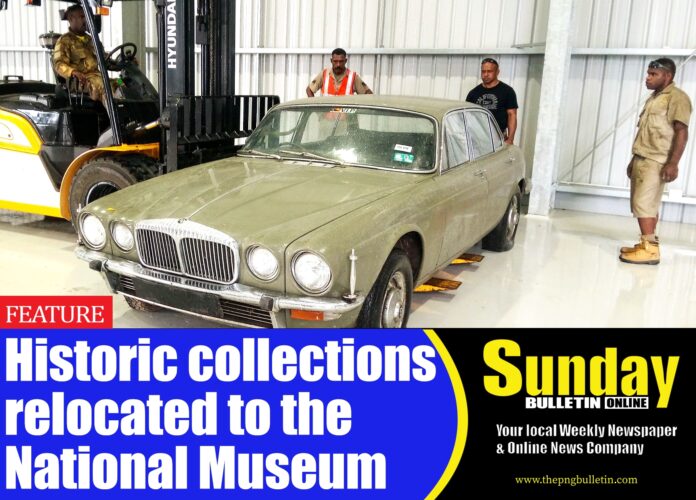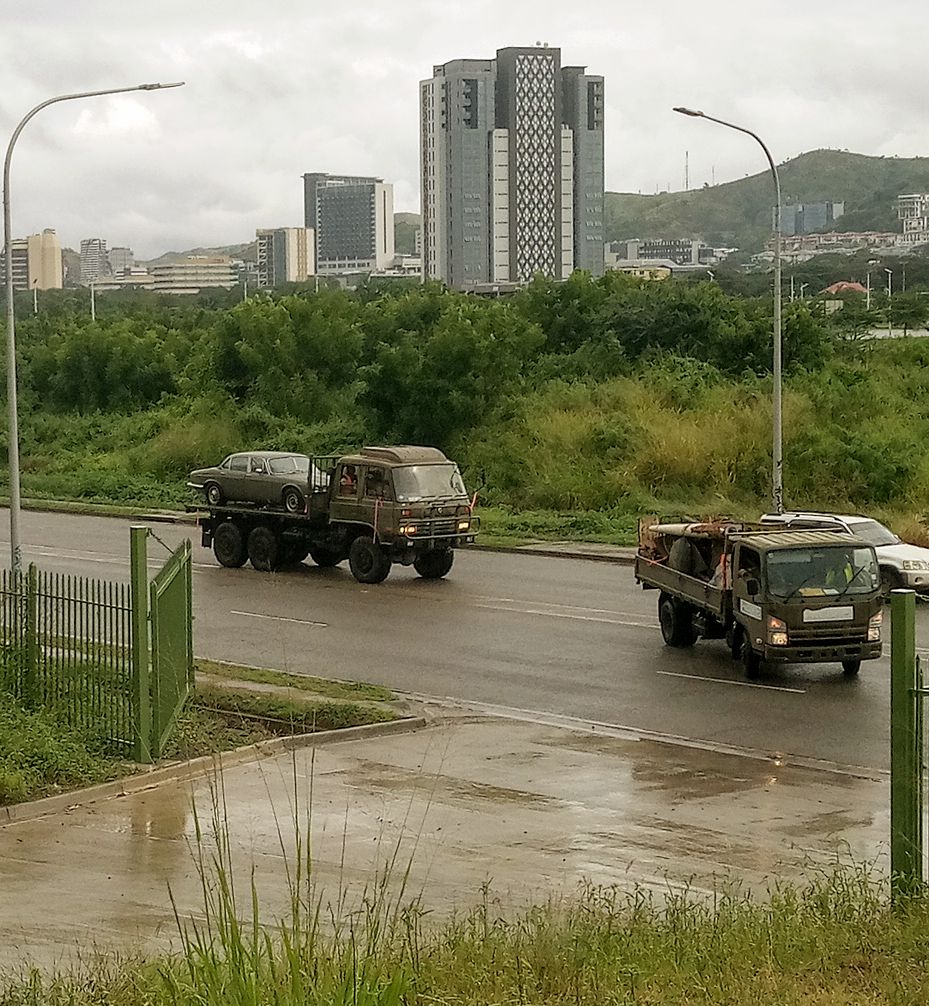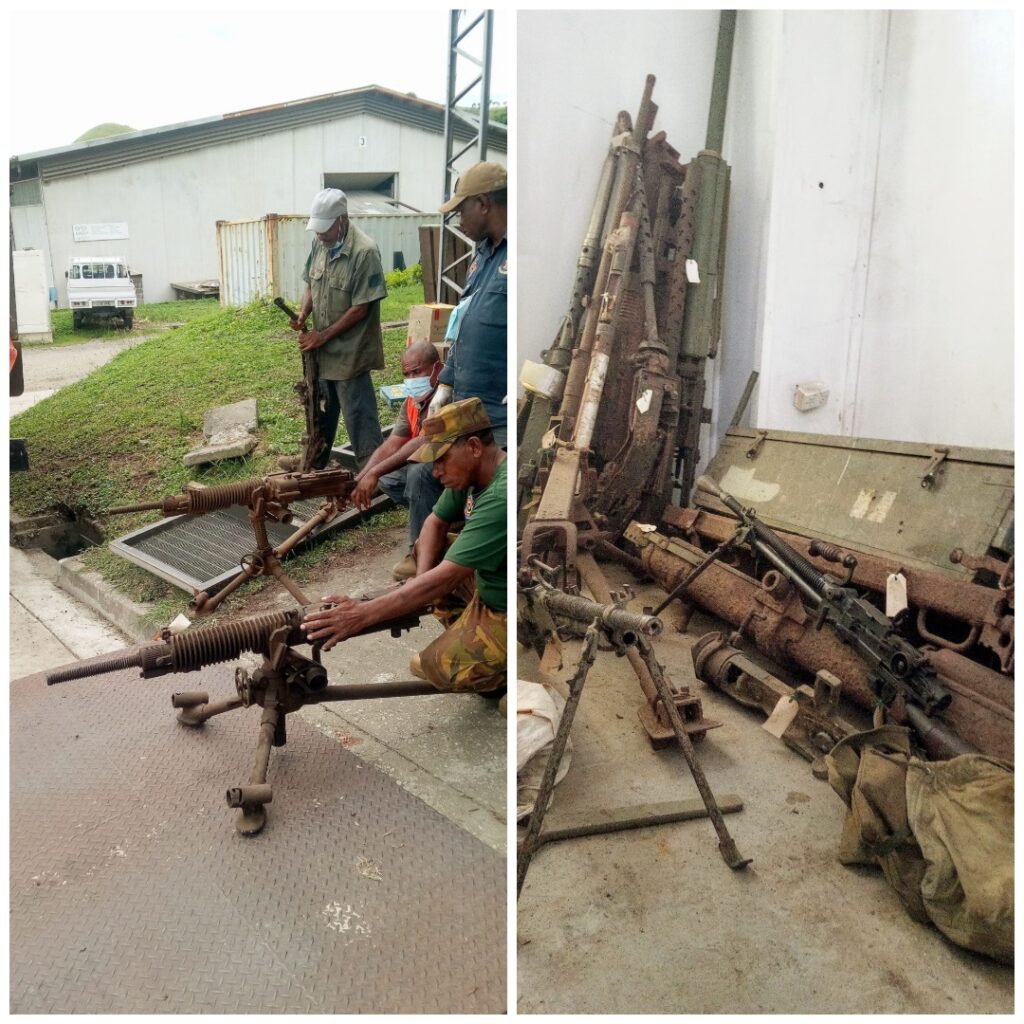
BY PAUL OEKA
Over 1,300 objects of historical importance were moved from Murray barracks to a new exhibition wing at the National Museum and arts Gallery (NMAG) this week.
Museum staff with help from soldiers from the PNG Defence Force supply company successfully completed the relocation of these historical objects from a warehouse at Murray Barracks to the newly built Aviation Heritage Centre at the national museum.
This transfer, which took place over a three-day period this week, included a diverse range of historical objects from important moments in PNG’s history.
Overseeing the relocation exercise was NMAG’s Acting Chief Curator, Gregory Bablis who mentioned that among the objects moved were a sizeable collection of war relics including weapons, arms, vehicles, and aircraft components.
“We have 1,346 war surplus materials that have been recorded and are a part of the country’s national collection being looked after by the National Museum,”
“Some of these artifacts highlight our military past and serve as a reminder to the people of PNG about the difficult times that soldiers went through during the second world war,”
“Right now, the museum is tasked with relocating these pieces and preserving them in ways that can educate and inspire future generations,” Bablis said.

One significant piece in the collection was the iconic Jaguar once driven by PNG’s first Prime Minister late Grand Chief Sir Michael Thomas Somare, from 1975 to 1980. The stunning car was handled carefully and moved out by PNGDF soldiers from Murray barracks to the national museum’s new wing.
The car which is now a historical piece of PNG will be on display during the country’s 50th independence celebrations and is expected to draw attention.
The collection also included notable items such as PNG’s very first fire truck and two old model limousines used to transport Prince Charles during his visit to PNG in 1975. These vehicles are also being preserved as part of the national collection.
Although this relocation exercise has been a success, it comes after critical challenges following difficulties experienced by NMAG with storage facilities in recent years.
It was revealed that commitments of a memorandum of understanding (MoU) signed between the National Museum and National Capital District Commission (NCDC) in 2015 were not satisfied by NCDC.
In 2015 NCDC acquired land owned by the Museum that housed the current relocated objects to build roads to ease traffic for the 2015 South Pacific Games.
However, terms such as the commitment of funds for the relocation of objects, construction of new building facilities, and the rental costs of the PNGDF warehouses used for storage have not been fulfilled.
Museum’s Chief Curator Bablis revealed that when NCDC acquired the Museum’s land, most collections were displaced and they lost two office buildings, a warehouse and a workshop that use to house the currently moved collections.
“The terms of the MoU stated that NCDC meet the cost of the relocation of the objects to Murray Barracks and to the main museum and also to give us new land and to replace the buildings that had been destroyed.”
“To date, land has been given near the Kumul Flyover but they are yet to construct our new building facilities. Apart from this, NCDC are also yet to meet PNGDF’s 10 years’ worth of rental arrears where our national collections were being stored,” Bablis stated.

Despite this setback, the National Museum has now had to meet the cost itself and with the support of PNGDF who have allowed the use of their vehicles as well as the manpower of their soldiers.
Their assistance has sped up the whole process and what could have taken 2 weeks to do, was managed to do in under a week.
Bablis also expressed his gratitude and was grateful to PNGDF and corporate sponsor, South Sea Horizons who have provided extra financial assistance to help NMAG complete the relocation exercise.
Furthermore, he added that the artifacts in the Modern History collection stand as reminders of the sacrifices and work that needed to be done.
He also reflected on the important role of the Museum in PNG’s golden jubilee and how successive governments have neglected this important cultural and historical institution that keeps the memory and conscience of the country.
